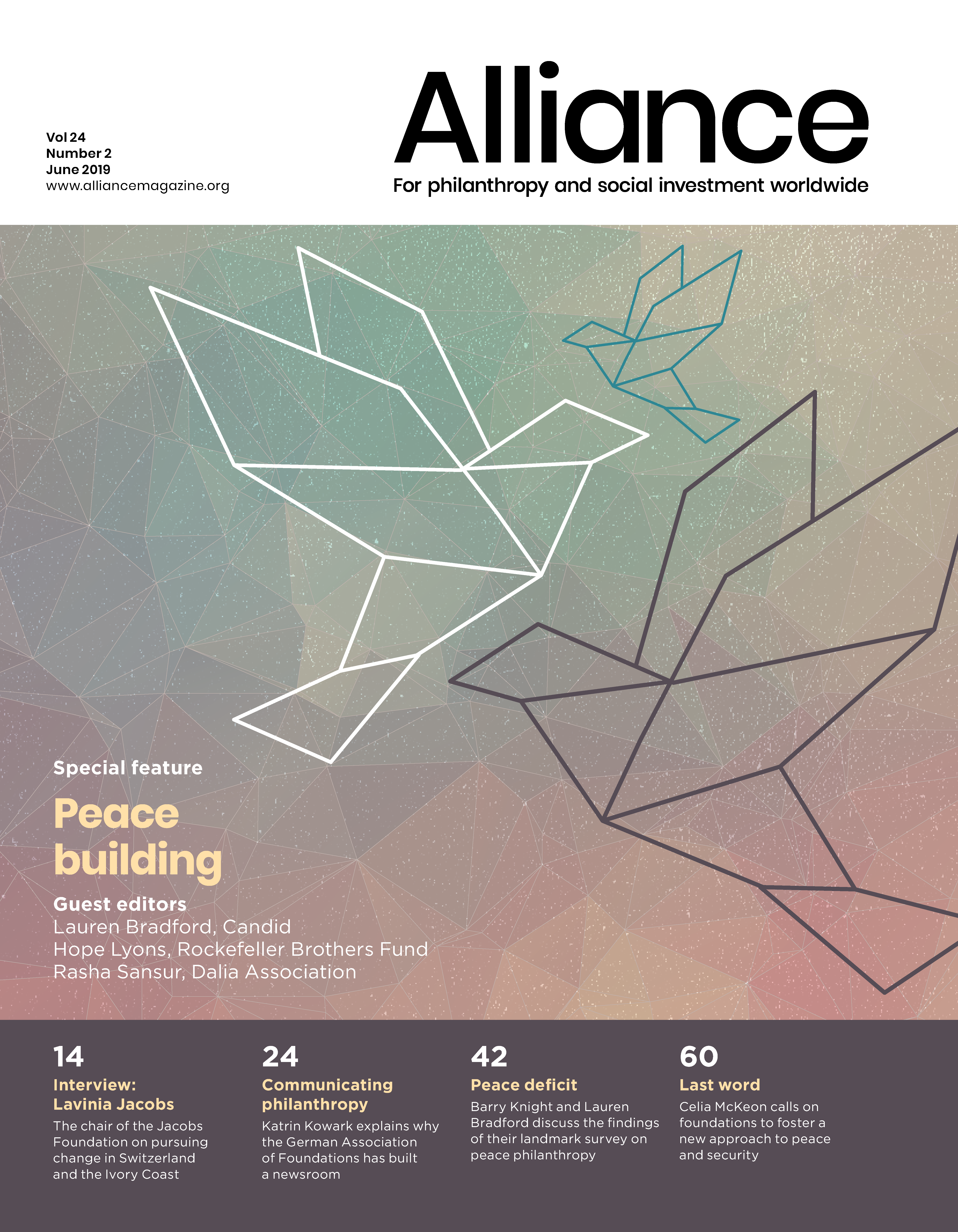Why the Association of German Foundations and others in the non-profit sector have created new spaces for integrated communications
TV series junkies might be familiar with the term ‘newsroom’ from the American TV series of the same name, an ode to quality journalism. The newsroom is a space that connects all channels of communication. About ten years ago, companies started to adopt the newsroom idea for their public relations and communications work. Since then, more and more non-profit organisations and foundations have followed the same route.
The future of creative work, which is moving in the direction of self-determined action, flat hierarchies, and participatory decision-making in open and networked spaces.
In an ideal newsroom scenario, all communicative efforts – online, social media, press, and print – work together and in an integrated way, not just alongside each other.
A study by Quadriga University Berlin identifies three criteria for a ‘real’ PR newsroom:
- A managing editor who coordinates all the work across the media
- A leadership team which is responsible for planning, executing and controlling all activities
- A specialist in each channel who can speak, write and react.
A child of digitisation
The newsroom is the result of digitisation. An increasing number of channels, the growing complexity of the world and the diminishing predictability of the future, requiring more speed, more flexibility, and a great willingness to embrace the unknown are all contributory to its rise. Foundation projects are no longer only told through the annual offline report but also online in videos, podcasts, Instagram stories, blogs, and very often across all these channels. Grant applicants are no longer addressed just by mail and email, but also on Facebook, Snapchat, Instagram or Twitter.
However, the newsroom is also a test for – and this is the other reason for its success – the future of creative work, which is moving in the direction of self-determined action, flat hierarchies, and participatory decision-making in open and networked spaces. Commonly described as ‘New Work’ the newsroom is the result of a new digital and global knowledge age that requires different forms of work from those we know from industrial society.
Exploring new possibilities
Deutsche Welthungerhilfe was one of the first NGOs in Germany to change its communications strategy. Its newsdesk, an eight-strong interdisciplinary communication team, is responsible for internal and external communication, as well as for the monitoring and distribution of communicative assets. It took this step because it saw the need to ‘tell stories across all kinds of media’, as Simone Pott, press spokesperson for Deutsche Welthungerhilfe, says.
Moreover, since the change, all communication has been in English, because in development cooperation, stories are told globally. Because of its newsdesk, Welthungerhilfe is regarded as exemplary in the NGO sector and won the accolade ‘Press Office of the Year’ in 2016.
We want to tell stories
The World Wildlife Fund (WWF) has also recently started to communicate through a newsroom, which it calls a ‘content room’ and which covers the areas of press, digital communication, campaigns, education and online marketing. What makes the WWF Content Group distinctive is that the team increasingly thinks in terms of pictures and videos. With its film studio, camera equipment, and video editors, WWF Germany produces formats such as the YouTube series ‘Panda Planet’.
The newsroom strategy enables the three teams of internet, publication, and press to collaboratively create a constant flow of stories across all on- and offline media.
Nor is the newsroom idea restricted to major players. Smaller organisations are also making use of collaborative cross-media communications as proven by the Braunschweig Foundation. Insa Heinemann and Friedemann Schnur, both responsible for different individual projects and only partly for communication, have created a virtual newsroom. After a strategy workshop on making use of digital exchange in their communication, they started an editorial plan to control their appearances on Instagram, Facebook and Twitter. What distinguishes them is their great desire to try out social media applications – including automated postings, monitoring reach and interaction as well as collating and displaying all channels on an individually designed website.
The future is digital
Since the end of 2017, the Association of German Foundations has also had its own newsroom. Its goal is to create a space in which internet, publication and press teams are merged in order to create synergy, tell stories across media and cover all topics which are relevant to German foundations comprehensively and in-depth.
Besides keeping responsibility for their particular form of communication, the three team leaders rotate weekly as managing editors. They are supported by what we call the ‘editor of the service’ – a task which also rotates among everyone in the newsroom on a weekly basis. This task includes scanning the news and email inboxes, editing articles, curating social media channels, and researching topics for the new podcast Goodcast. The other members of the team write articles for on- and offline publications, create stories across various channels, and take care of the website, social media and magazine operations. This rotation not only enables everybody in the newsroom to think beyond the separate channels, but it also ensures that everybody is familiar with the current news stream as well as the issues that are vital for German foundations. The newsroom strategy enables the three teams of internet, publication, and press to collaboratively create a constant flow of stories across all on- and offline media.
At the Association of German Foundations, we feel that each of these three examples illustrates the merits of the newsroom idea across different forms and sizes of non-profit organisations. We believe that others might profitably follow suit.
An original version of this article was published in German in the members’ magazine of the Association of German Foundations, Stiftungswelt.
Katrin Kowark is press spokesperson at the Association of German Foundations.
Email: katrin.kowark@stiftungen.org
Twitter: @katkowa










Comments (0)